How to Set Up Your Chair for Better Posture and Health
|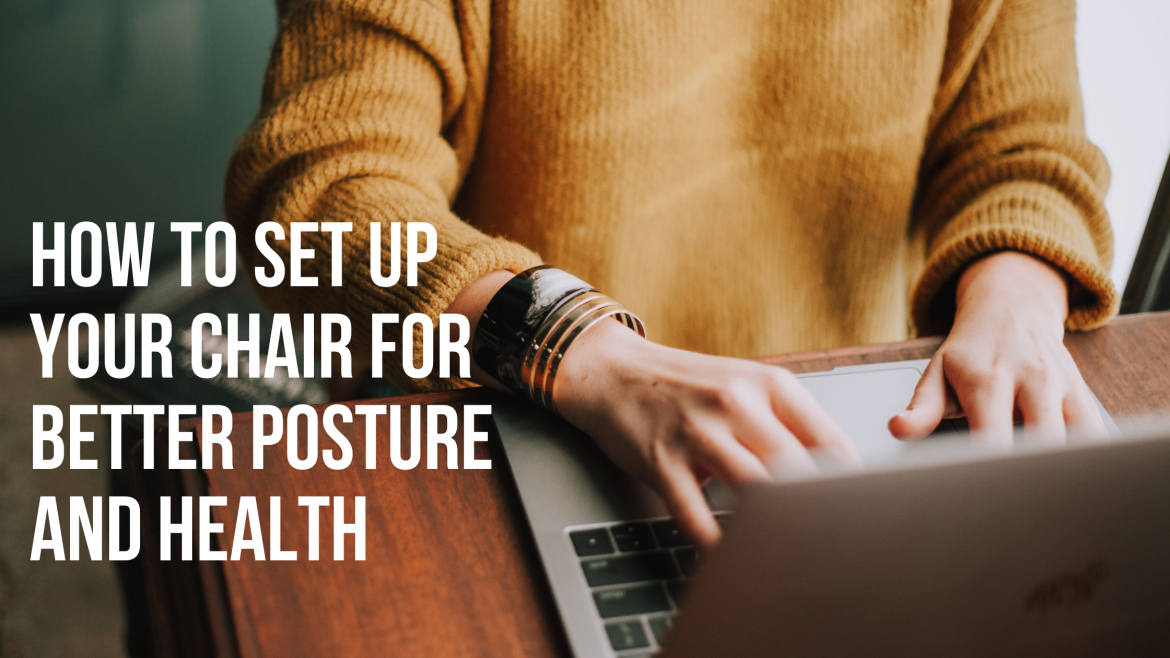
Sitting for extended periods can strain your back, neck, and shoulders if your chair isn’t properly adjusted. Ergonomic chairs are designed to support good posture and minimize discomfort, but the real benefits come from setting them up correctly. By taking a few minutes to fine-tune your chair, you can significantly improve your posture, reduce back pain, and increase comfort at work.
Here’s a step-by-step guide on how to set up your ergonomic chair for better posture and health:
1. Adjust the Chair Height
Why It Matters: The correct chair height ensures your feet rest flat on the floor, and your knees are at a 90-degree angle, preventing strain on your lower back and thighs.
How to Do It:
- Stand in front of your chair and adjust the seat height so that it’s just below your knee cap.
- Sit down with your feet flat on the floor and your knees bent at a right angle.
- Ensure that your thighs are parallel to the ground, and your knees are level with or slightly lower than your hips.
If your feet don’t reach the floor comfortably, consider using a footrest.
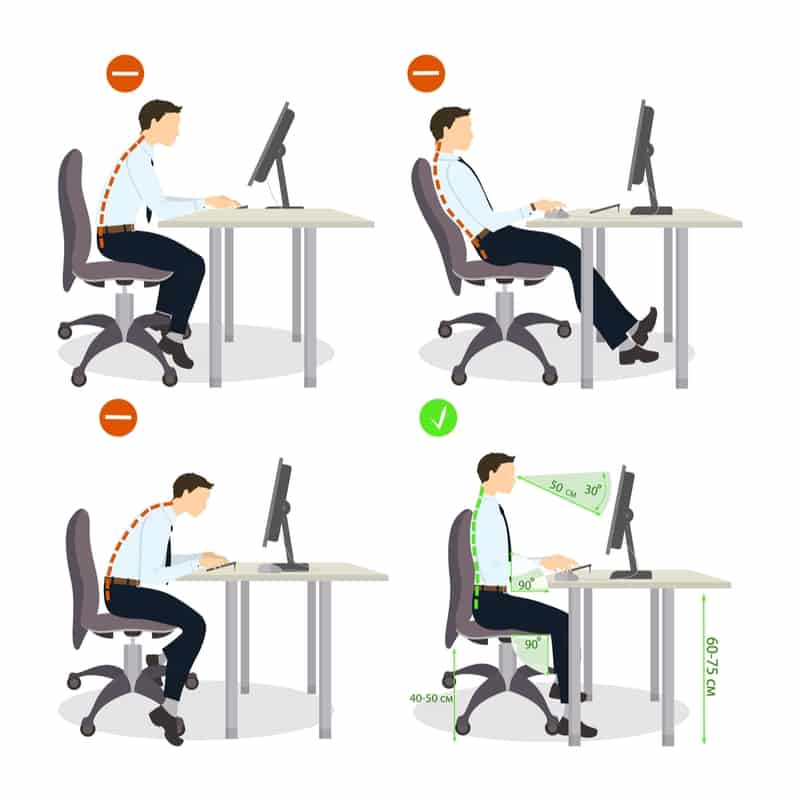
2. Adjust the Seat Depth
Why It Matters: Proper seat depth supports your thighs without putting pressure on the back of your knees, which can restrict blood circulation.
How to Do It:
- Sit back fully in the chair.
- Adjust the seat depth so that there is about 2-3 inches of space between the back of your knees and the edge of the chair.
- Your entire back should be supported by the backrest without needing to scoot forward.
Most ergonomic chairs have a sliding seat pan or depth adjustment lever to get the right distance.

3. Adjust the Lumbar Support
Why It Matters: Lumbar support is crucial for maintaining the natural curve of your lower spine, which helps prevent slouching and lower back pain.
How to Do It:
- Sit fully back in your chair so your back is in contact with the backrest.
- Adjust the lumbar support height so that it fits snugly against the curve of your lower back (the small of your back).
- If your chair doesn’t have built-in lumbar support, consider using an external lumbar cushion or a rolled-up towel.
The lumbar support should push slightly into your lower back to maintain the natural “S” shape of your spine.
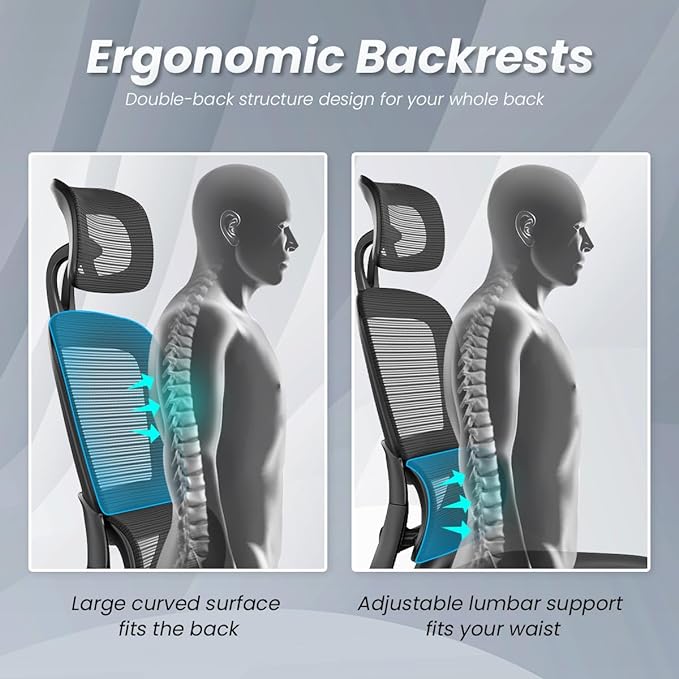
4. Adjust the Backrest Tilt
Why It Matters: Your backrest tilt supports your upper body and relieves spinal pressure, helping you maintain a healthy sitting posture throughout the day.
How to Do It:
- Set the backrest angle to a slightly reclined position (90-110 degrees) for better back support.
- If your chair has a tilt lock, lock it in place once you find a comfortable angle.
- The backrest should be firm enough to support your spine but allow a bit of movement to avoid stiffness.
Avoid leaning too far forward or backward, as this puts unnecessary strain on your spine.
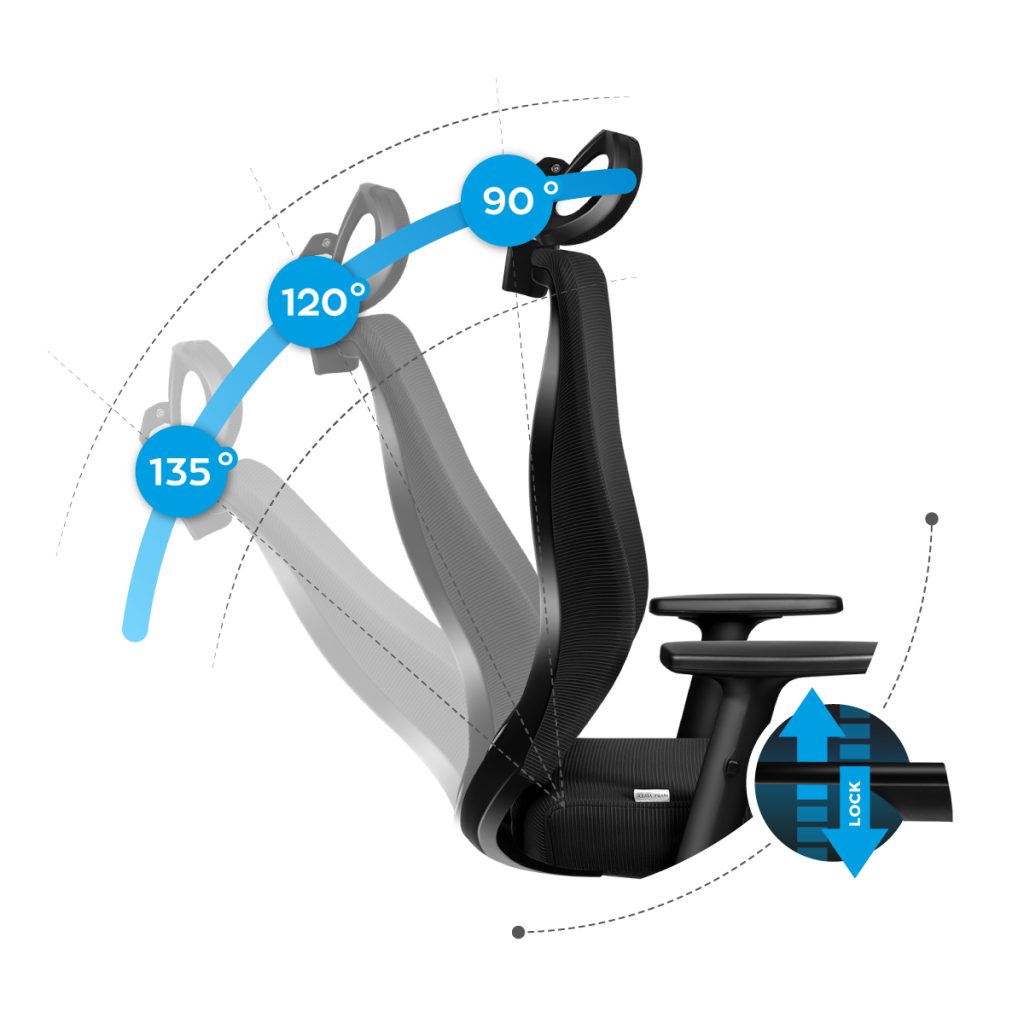
5. Adjust the Armrests
Why It Matters: Armrests help reduce strain on your shoulders and neck by supporting your arms, but if they’re too high or too low, they can cause discomfort.
How to Do It:
- Adjust the armrest height so that your arms are at a 90-degree angle when typing or using a mouse.
- Your shoulders should remain relaxed without shrugging or slouching.
- The armrests should be close enough to support your elbows without forcing your arms outward.
If your chair’s armrests are in the way of your desk or interfere with your movement, it’s best to lower them or remove them altogether.
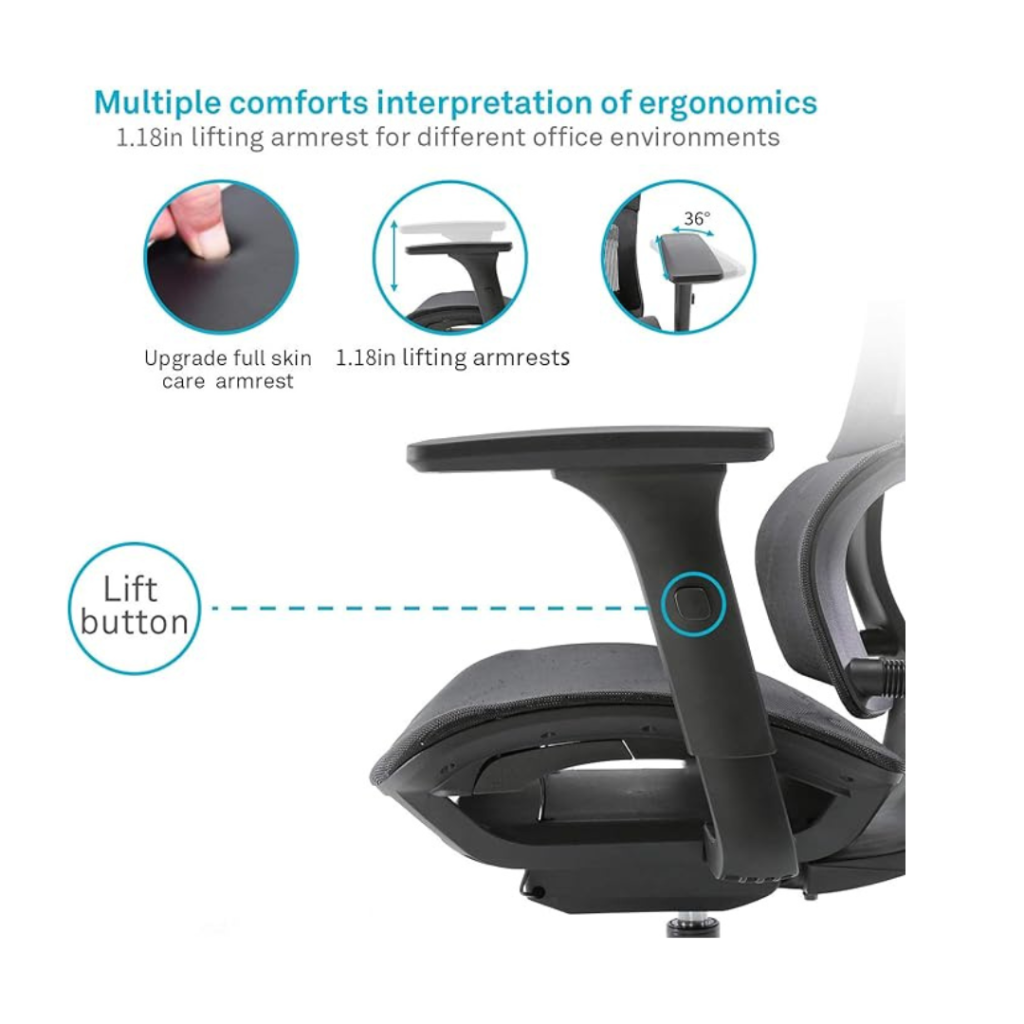
6. Position Your Monitor and Desk
Why It Matters: Even with the perfect chair setup, poor monitor and desk positioning can still cause neck and eye strain.
How to Do It:
- Position your monitor directly in front of you, about an arm’s length away.
- The top of the screen should be at or just below eye level.
- Your keyboard and mouse should be within easy reach, allowing your elbows to stay close to your body and your wrists in a neutral position.
This setup encourages good posture and reduces the need to lean forward or crane your neck.

7. Take Frequent Breaks
Why It Matters: No matter how well your chair is adjusted, sitting for long periods without movement can lead to stiffness and discomfort.
How to Do It:
- Stand up and stretch for a few minutes every 30-60 minutes.
- Try to incorporate some movement, like walking or stretching your back, shoulders, and legs.
- Consider using the 20-20-20 rule for your eyes: every 20 minutes, look at something 20 feet away for 20 seconds to reduce eye strain.
Movement throughout the day helps your muscles stay relaxed and prevents the buildup of tension.
A well-adjusted ergonomic chair is a vital component of a healthy and productive workspace. By taking the time to properly adjust your chair’s height, seat depth, lumbar support, backrest tilt, and armrests, you’ll not only improve your posture but also prevent common issues like back pain and neck strain.
Remember, it’s not just about the chair—monitor placement, desk setup, and regular movement all contribute to better posture and long-term health.
Start setting up your chair today and feel the difference in your comfort and productivity!













